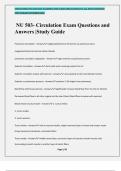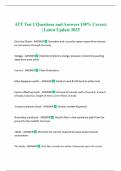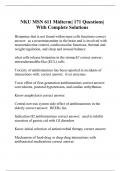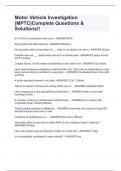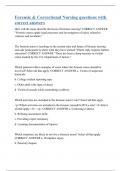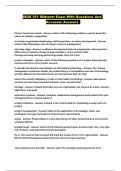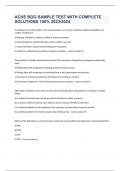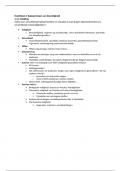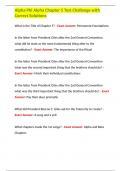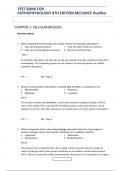Exam (elaborations)
NU 503- Circulation Exam Questions and Answers |Study Guide
- Course
- Institution
EMILLYCHARLOTTE 2024/2025 ACADEMIC YAER ©2024 EMILLYCHARLOTTE. ALL RIGHTS RESERVED FIRST PUBLISH SEPTEMBER 2024 Page 1/16 NU 503- Circulation Exam Questions and Answers |Study Guide Pulmonary Circulation - Answer-oxygenated blood to left atrium via pulmonary veins oxygenate blood and remove ...
[Show more]
